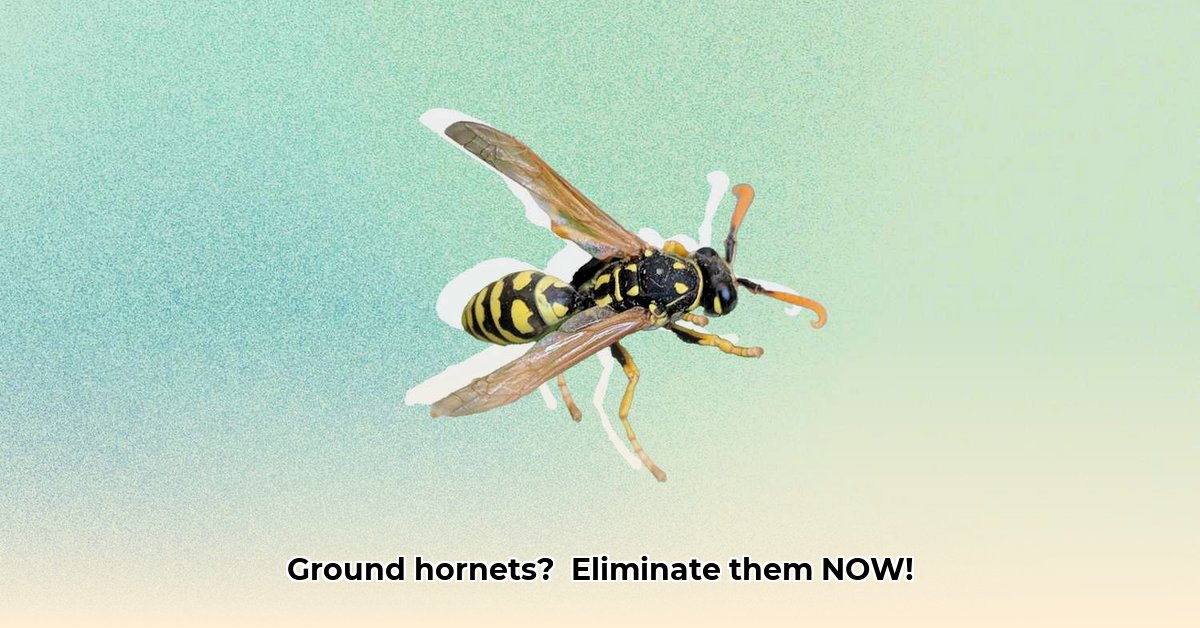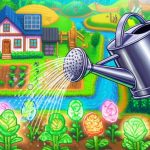Ground hornets can transform your yard from a haven into a hazard. This guide provides a comprehensive strategy for eliminating these stinging pests, from identifying the species to preventing future infestations. We’ll explore effective DIY methods and when to call in professional help.
Identifying the Enemy: Ground Hornets vs. Other Stinging Insects
Accurate identification is the first step in effective ground hornet control. While the term “ground hornet” is commonly used, it often refers to several ground-nesting wasp species, including cicada killers, yellow jackets, and European hornets. Understanding the specific species you’re dealing with is crucial for selecting the right removal strategy.
- Cicada Killers: These large, solitary wasps are often mistaken for hornets. They prey on cicadas and rarely sting humans unless provoked. Their nests are individual burrows in the ground, marked by small mounds of dirt.
- Yellow Jackets: These social wasps are smaller than cicada killers and more aggressive. They build nests in the ground or in wall voids and will sting readily when disturbed. Their nests can house thousands of individuals.
- European Hornets: These large, social wasps build paper nests in trees, shrubs, or attics, but occasionally nest in the ground. They are less aggressive than yellow jackets but deliver a painful sting.
Identifying the species, nest location, and colony size helps you assess the potential threat and determine the best course of action.
Effective Removal Methods: From DIY Solutions to Professional Extermination
Choosing the right removal method depends on the species, nest size, your comfort level, and the presence of vulnerable individuals (children, pets, or those with allergies). Always prioritize safety by wearing protective gear and working during nighttime or early morning hours when hornets are less active.
DIY Methods:
-
Soapy Water Treatment: This eco-friendly method is effective against small, new nests of cicada killers or yellow jackets. Mix a strong solution of dish soap and water in a spray bottle and thoroughly drench the nest entrance. The soap disrupts the insects’ respiratory system and causes dehydration. Repeat applications may be necessary.
-
Trapping: Traps using sugary liquids, meat, or pheromone lures can reduce the number of foraging hornets and potentially slow down nest development. This method is best used as a supplementary strategy alongside nest removal or for managing small numbers of hornets.
-
Insecticide Dust: This potent method is effective for larger nests, especially those of yellow jackets. Apply the dust directly to the nest entrance at night. The dust adheres to the hornets as they enter and exit, contaminating the entire colony. Follow label instructions carefully and wear protective gear.
-
Insecticide Sprays: These provide a quick knockdown for visible hornets and can be used to treat nest entrances. However, sprays pose a higher risk of stings and require precise application. Choose a product specifically labeled for wasps and hornets.
Professional Extermination:
For large, established colonies, nests in inaccessible locations, or if you are uncomfortable dealing with stinging insects yourself, professional pest control is the safest and most effective solution. Experts have the knowledge, equipment, and protective gear to handle these situations thoroughly.
Prevention is Key: Long-Term Strategies for a Hornet-Free Yard
Preventing future infestations is more effective than reacting to established nests. Implement these proactive measures to make your yard less attractive to ground-nesting wasps:
-
Soil Management: Compact bare soil areas and maintain consistent moisture levels to deter nesting. Fill in existing burrows and cover them with a layer of mulch or rocks.
-
Landscaping Practices: Minimize attractive nesting sites by reducing bare patches of soil, planting dense ground cover, and keeping grass mowed short.
-
Sanitation: Remove food sources that attract hornets, such as fallen fruit, open garbage cans, and spilled sugary drinks. Clean up pet waste regularly.
-
Regular Inspections: Inspect your yard regularly, especially during peak season, for signs of ground hornet activity. Early detection allows for prompt intervention and prevents colonies from becoming established.
-
Seal Entry Points: Inspect your home for potential entry points and seal any cracks or gaps in walls, foundations, and around windows and doors.
By combining these preventive measures with effective removal methods, you can effectively manage ground hornet problems and enjoy a safe and comfortable outdoor space.
- Witcher Mods Transform Your Journey Through The Wild Hunt - December 14, 2025
- Witcher REDkit Now Free, Giving Players Developer-Level Modding Power - December 13, 2025
- Witcher 3 Mods Dramatically Enhance Gameplay and Immersion - December 12, 2025










